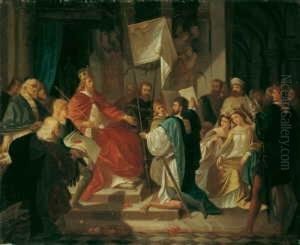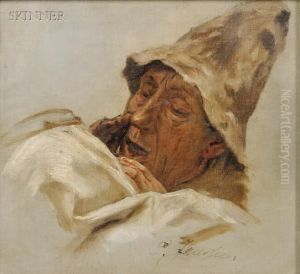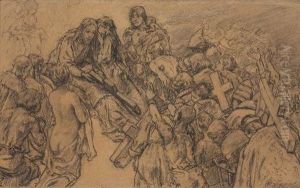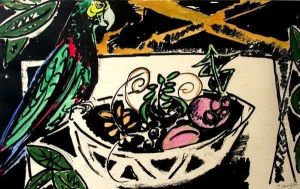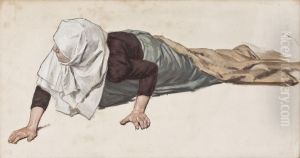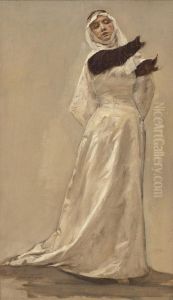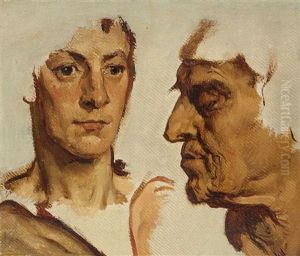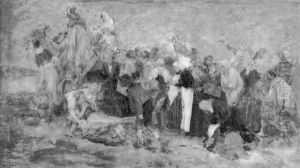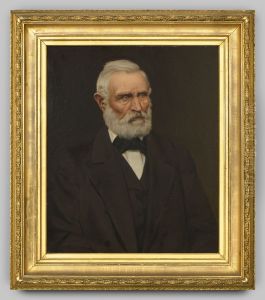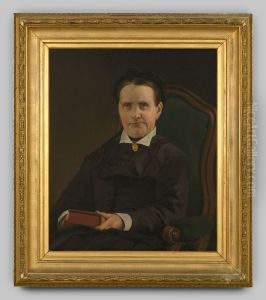Peter Janssen Paintings
Peter Janssen, born on June 12, 1844, in Düsseldorf, Germany, was a notable German historical painter during the late 19th century. He is often associated with the Düsseldorf school of painting, an art movement that emerged in the 1830s among a group of painters who studied at the Düsseldorf Academy of Arts. Janssen was known for his large-scale historical and mythological paintings.
Janssen began his artistic education at the Düsseldorf Academy of Arts, where he was influenced by the teachings of Wilhelm von Schadow, the director of the academy, and other prominent artists such as Karl Ferdinand Sohn and Eduard Bendemann. This institution was renowned for its rigorous training and emphasis on historical and genre painting, which greatly shaped Janssen's artistic direction.
Throughout his career, Janssen focused on monumental compositions with strong narrative elements. His works often depicted scenes from German history, literature, and mythology, which resonated with the growing sense of national identity and cultural pride during the period of German unification.
One of his major works is the cycle of frescoes in the auditorium of the University of Bonn, which he completed over several years. These frescoes showcase Janssen's skill in creating dynamic compositions that combine historical accuracy with dramatic intensity. In addition to frescoes, Janssen painted altarpieces and other religious subjects, reflecting the 19th-century interest in spiritual and moral themes.
Janssen served as a professor at the Düsseldorf Academy of Arts, where he taught and influenced a new generation of German painters. His dedication to the academy and his students helped perpetuate the traditions of the Düsseldorf school beyond his own lifetime.
Peter Janssen died on February 19, 1908, in Düsseldorf. His legacy is preserved in his numerous works that continue to be studied and admired for their contribution to 19th-century German art. Janssen's paintings can be found in various museums and collections, attesting to his historical significance and the enduring appeal of his artistic style.
